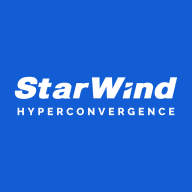


Find out in this report how the two Software Defined Storage (SDS) solutions compare in terms of features, pricing, service and support, easy of deployment, and ROI.



FlashBlade is the industry’s most advanced scale-out storage for unstructured data, powered by a modern, massively parallel architecture to consolidate complex data silos (like backup appliances and data lakes) and accelerate tomorrow’s discoveries and insights.
For SMB and Enterprises who are looking for high performance primary storage for server virtualization, VDI, database and Big Data scenarios, or inexpensive secondary backup tier, our solution is StarWind Storage Appliance. It unifies commodity servers, disks and flash, and associated software into an easily scalable storage platform.
Additionally, the appliance features an optional gateway to Azure public cloud, which helps to implement an effective Disaster Recovery plan or meet regulatory requirements. StarWind SA scales up by adding individual disks and flash modules, or JBODs, while adding ready controller nodes allows scaling out.
StarWind SA targets those, who need high-performance primary storage or secondary storage for backup. In case there is a whole virtualization infrastructure to build from scratch, StarWind HCA will come in handy. Otherwise, if all the required hardware is present, StarWind Virtual SAN will be enough to build a high-performance virtualization setup.
We monitor all Software Defined Storage (SDS) reviews to prevent fraudulent reviews and keep review quality high. We do not post reviews by company employees or direct competitors. We validate each review for authenticity via cross-reference with LinkedIn, and personal follow-up with the reviewer when necessary.